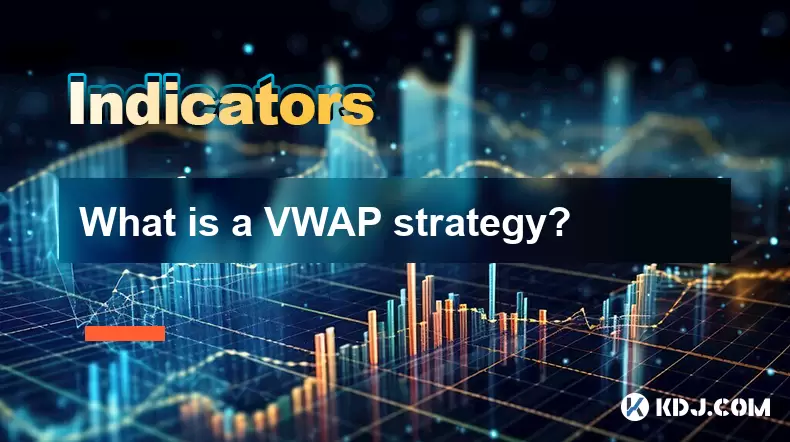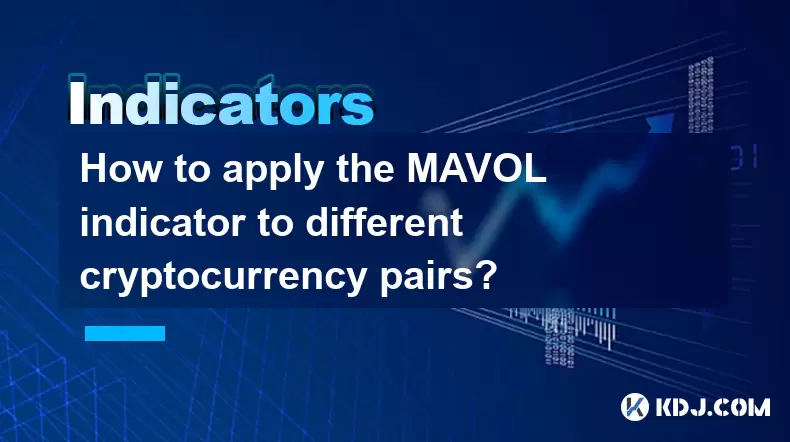-
 Bitcoin
Bitcoin $118400
0.47% -
 Ethereum
Ethereum $3836
2.20% -
 XRP
XRP $3.157
2.98% -
 Tether USDt
Tether USDt $0.9999
-0.03% -
 BNB
BNB $801.5
1.31% -
 Solana
Solana $180.9
2.07% -
 USDC
USDC $0.9999
-0.02% -
 Dogecoin
Dogecoin $0.2225
2.50% -
 TRON
TRON $0.3285
-1.02% -
 Cardano
Cardano $0.7789
2.60% -
 Hyperliquid
Hyperliquid $43.60
2.39% -
 Sui
Sui $3.892
4.41% -
 Stellar
Stellar $0.4229
3.34% -
 Chainlink
Chainlink $18.01
3.98% -
 Hedera
Hedera $0.2745
6.77% -
 Bitcoin Cash
Bitcoin Cash $582.3
3.38% -
 Avalanche
Avalanche $23.77
1.04% -
 Ethena USDe
Ethena USDe $1.001
0.01% -
 Toncoin
Toncoin $3.493
3.59% -
 Litecoin
Litecoin $110.0
2.48% -
 UNUS SED LEO
UNUS SED LEO $8.936
-0.37% -
 Shiba Inu
Shiba Inu $0.00001304
2.49% -
 Uniswap
Uniswap $9.999
1.09% -
 Polkadot
Polkadot $3.897
3.26% -
 Monero
Monero $308.6
-0.83% -
 Dai
Dai $0.9999
-0.01% -
 Bitget Token
Bitget Token $4.504
-0.04% -
 Pepe
Pepe $0.00001154
2.95% -
 Cronos
Cronos $0.1471
3.06% -
 Ethena
Ethena $0.6691
19.53%
What is a VWAP strategy?
VWAP combines price and volume to identify fair value, acting as dynamic support/resistance in crypto trading.
Jul 31, 2025 at 01:11 am

Understanding the VWAP Indicator in Cryptocurrency Trading
The Volume Weighted Average Price (VWAP) is a trading benchmark used by traders to determine the average price a cryptocurrency has traded at throughout the day, based on both volume and price. It is particularly useful in assessing the fair value of an asset over a given period. Unlike a simple moving average, which only considers price, VWAP incorporates trading volume, making it more reflective of actual market activity. This makes it a preferred tool among institutional and algorithmic traders in the cryptocurrency markets.
VWAP is calculated by summing up the dollars traded for every transaction (price multiplied by number of units traded) and then dividing by the total units traded. The formula is:
VWAP = Σ (Price × Volume) / Σ Volume
This calculation is typically performed cumulatively from the beginning of a trading session, such as the start of a 24-hour crypto trading day. Most trading platforms automatically compute and display VWAP on price charts, eliminating the need for manual calculations.
How VWAP Functions as a Dynamic Support and Resistance Level
In cryptocurrency trading, VWAP often acts as a dynamic support or resistance level. When the current price is above the VWAP line, it generally indicates bullish sentiment, suggesting that buyers are in control. Conversely, when the price trades below VWAP, it signals bearish momentum, with sellers dominating the market.
Traders monitor the relationship between price and VWAP to assess trend strength. For example:
- A price holding above VWAP with increasing volume may confirm an uptrend.
- A price failing to break above VWAP on multiple attempts could indicate weakening bullish momentum.
- A sustained move below VWAP with high volume might signal the start of a downtrend.
Because VWAP is recalculated throughout the trading period, it adjusts to new volume and price data, offering real-time feedback on market sentiment.
Implementing a VWAP-Based Entry Strategy
A common VWAP strategy involves using the indicator to time entries based on mean reversion or trend continuation. Traders using this method often combine VWAP with other technical tools like moving averages or Bollinger Bands for confirmation.
To set up a basic VWAP entry strategy:
- Add the VWAP indicator to your trading chart via your preferred platform (e.g., TradingView, Binance, or Bybit).
- Wait for the price to pull back toward the VWAP line during a strong trend.
- Look for increasing volume as the price approaches VWAP to confirm interest.
- Enter a long position if the price bounces off VWAP with bullish candlestick patterns (e.g., hammer, engulfing).
- Enter a short position if the price rejects VWAP with bearish patterns (e.g., shooting star, dark cloud cover).
Some traders also use VWAP crossovers as entry signals. For instance, a bullish crossover occurs when the price moves from below to above VWAP on high volume, potentially signaling a shift in momentum.
Using VWAP with Standard Deviation Bands
Many traders enhance the VWAP strategy by adding standard deviation bands around the VWAP line, creating a VWAP Bollinger Band-like system. These bands help identify overbought or oversold conditions relative to volume-weighted average pricing.
To apply VWAP with bands:
- Enable VWAP with standard deviation channels on your charting software.
- The default is usually ±1 or ±2 standard deviations from VWAP.
- When the price touches the upper band, it may indicate overbought conditions, suggesting a potential short or profit-taking opportunity.
- When the price touches the lower band, it may signal oversold conditions, indicating a potential long or buying opportunity.
- Always confirm with volume spikes and price action—e.g., a rejection candle at the lower band with rising volume increases the validity of a long setup.
This method is especially effective in ranging or moderately volatile markets, where price tends to oscillate around the VWAP.
Timeframe Considerations and Session Resets
VWAP is inherently session-based, meaning it typically resets at the start of each trading period. In cryptocurrency, where markets operate 24/7, traders must decide on a custom session window—common choices include 24-hour, weekly, or even intraday sessions like 4-hour blocks.
Key considerations:
- A 24-hour VWAP resets at the same time each day (e.g., UTC 00:00) and is widely followed.
- Some platforms allow custom session start times, enabling traders to align VWAP with their preferred trading window.
- On lower timeframes (e.g., 5-minute or 15-minute charts), VWAP becomes more sensitive to recent volume surges.
- On higher timeframes (e.g., 1-day), VWAP provides a broader view of institutional-level average prices.
Choosing the right timeframe depends on your trading style. Scalpers may use 1-hour VWAP with 15-minute charts, while swing traders might rely on daily VWAP across 4-hour or 1-day charts.
Common Pitfalls and Risk Management in VWAP Trading
While VWAP is powerful, it has limitations. One major pitfall is lag, as VWAP is based on historical data and cannot predict sudden volatility. During high-impact news events or exchange outages, price can deviate sharply from VWAP without immediate correction.
Risk management tips:
- Never rely solely on VWAP—combine it with volume analysis, trendlines, or RSI.
- Avoid trading VWAP bounces in strong trending markets without confirmation, as price may continue in the trend direction.
- Use stop-loss orders below VWAP for longs or above VWAP for shorts to limit downside.
- Be cautious during low-volume periods (e.g., weekends), where VWAP may give false signals due to thin markets.
Additionally, VWAP is recalculated each period, so historical VWAP lines are not predictive—only the current session’s VWAP is relevant for real-time decisions.
Frequently Asked Questions
Can VWAP be used on all cryptocurrency exchanges?
Yes, VWAP is available on most major exchanges such as Binance, Bybit, Kraken, and Coinbase, either built into their charting tools or accessible via third-party platforms like TradingView. Ensure the exchange provides volume data per trade for accurate VWAP calculation.
Is VWAP suitable for beginner traders?
While VWAP is conceptually simple, interpreting its interaction with price and volume requires experience. Beginners should practice on demo accounts and combine VWAP with basic price action analysis before using it in live trading.
How does VWAP differ from a simple moving average (SMA)?
The key difference is that VWAP includes volume in its calculation, while SMA only averages price over time. This makes VWAP more accurate in reflecting true market value, especially during high-volume breakouts or dumps.
Can I automate a VWAP strategy using bots?
Yes, many trading bots support VWAP-based logic. You can program conditions such as "buy when price crosses above VWAP with volume > 20% of average" using platforms like 3Commas, Gunbot, or custom scripts on Python-based frameworks. Ensure backtesting is performed on historical crypto data to validate performance.
Disclaimer:info@kdj.com
The information provided is not trading advice. kdj.com does not assume any responsibility for any investments made based on the information provided in this article. Cryptocurrencies are highly volatile and it is highly recommended that you invest with caution after thorough research!
If you believe that the content used on this website infringes your copyright, please contact us immediately (info@kdj.com) and we will delete it promptly.
- SEC, Crypto, and On-Chain: Navigating the Regulatory Maze
- 2025-08-01 02:31:40
- Bitcoin Bullish Market: How Long Positions are Boosting the Crypto King
- 2025-08-01 02:35:33
- Visa, Stellar, and Stablecoins: A New York Minute on the Future of Finance
- 2025-08-01 01:50:50
- BCH, FET, BlockDAG: Decoding the Crypto Buzz
- 2025-08-01 01:16:37
- Conflux Token, Crypto Simplicity, and WeWake Finance: A New Era?
- 2025-08-01 01:50:50
- Dogecoin, Remittix, and Analyst Targets: Navigating the Crypto Landscape
- 2025-08-01 01:55:40
Related knowledge

What does it signify when the MACD crosses below the zero line?
Aug 01,2025 at 01:43am
Understanding the MACD IndicatorThe Moving Average Convergence Divergence (MACD) is one of the most widely used technical analysis tools in the crypto...

How does the MACD histogram show momentum?
Aug 01,2025 at 01:16am
Understanding the MACD Histogram and Its Role in Cryptocurrency TradingThe MACD histogram is a visual representation of the difference between the MAC...

What is a MACD crossover?
Jul 31,2025 at 11:52pm
Understanding the Role of Private Keys in Cryptocurrency SecurityIn the world of cryptocurrency, private keys are the cornerstone of ownership and con...

How can you use the MACD histogram to determine trend strength?
Jul 31,2025 at 11:10pm
Understanding the MACD Histogram and Its ComponentsThe MACD (Moving Average Convergence Divergence) histogram is a visual representation of the differ...

What is the impact of different moving average types (SMA vs. EMA) on the MAVOL indicator?
Aug 01,2025 at 02:31am
Understanding the MAVOL Indicator in Cryptocurrency AnalysisThe MAVOL (Moving Average Volume) indicator is a technical analysis tool used in the crypt...

How to apply the MAVOL indicator to different cryptocurrency pairs?
Aug 01,2025 at 12:43am
Understanding the MAVOL Indicator in Cryptocurrency TradingThe MAVOL indicator, short for Moving Average Volume, is a technical analysis tool that app...

What does it signify when the MACD crosses below the zero line?
Aug 01,2025 at 01:43am
Understanding the MACD IndicatorThe Moving Average Convergence Divergence (MACD) is one of the most widely used technical analysis tools in the crypto...

How does the MACD histogram show momentum?
Aug 01,2025 at 01:16am
Understanding the MACD Histogram and Its Role in Cryptocurrency TradingThe MACD histogram is a visual representation of the difference between the MAC...

What is a MACD crossover?
Jul 31,2025 at 11:52pm
Understanding the Role of Private Keys in Cryptocurrency SecurityIn the world of cryptocurrency, private keys are the cornerstone of ownership and con...

How can you use the MACD histogram to determine trend strength?
Jul 31,2025 at 11:10pm
Understanding the MACD Histogram and Its ComponentsThe MACD (Moving Average Convergence Divergence) histogram is a visual representation of the differ...

What is the impact of different moving average types (SMA vs. EMA) on the MAVOL indicator?
Aug 01,2025 at 02:31am
Understanding the MAVOL Indicator in Cryptocurrency AnalysisThe MAVOL (Moving Average Volume) indicator is a technical analysis tool used in the crypt...

How to apply the MAVOL indicator to different cryptocurrency pairs?
Aug 01,2025 at 12:43am
Understanding the MAVOL Indicator in Cryptocurrency TradingThe MAVOL indicator, short for Moving Average Volume, is a technical analysis tool that app...
See all articles

























































































